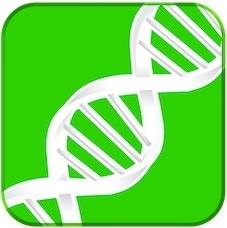PicoGreen dsDNA quantitation reagent is used to quantitate double-stranded DNA and is a highly sensitive fluorescent nucleic acid stain. PicroGreen is used in a wide range of molecular biological procedures, including primer assays, cDNA synthesis for library production and DNA fragment purification for subcloning.

Image Credit: DeNovix Inc.
Benefits of PicoGreen quantitation
The determination of absorbance at 260 nm (A260) is the most widely used method of measuring nucleic acid concentration.
Known as the absorbance method, it is commonly used because of the wide dynamic range of modern microvolume instruments, the direct quantification not requiring reagents or kits, and the speed of measurement. When specific quantification is required, fluorescence methods are commonly used.
This is because of contamination with single-stranded nucleic acid, proteins and nucleotides that may contribute to the total signal using absorbance. In addition to this, there is no way of distinguishing between RNA and DNA of contaminants that are frequently present in nucleic acid preparations, which can cause interference.
Hoechst (bis-benzimide) dyes are marginally too selective to be used in dsDNA despite also being sensitive nucleic acid stains. Additionally, when in the presence of proteins, it does not display substantial fluorescence enhancement.
The PicoGreen dsDNA quantitation assay can be used when selectively detecting as little as 25 pg/ml of dsDNA with free nucleotides, RNA and ssDNA present, having minimal impact on the intensity of fluorescence.
The assay has small amounts of sequence dependence and is linear, spanning three orders of magnitude. This means it is possible to accurately measure DNA from a range of sources, such as PCR amplification products, miniprep DNA, viral DNA, or genomic DNA.
PicoGreen dsDNA quantitation is well-suited to microarray samples, genomic DNA quantitation, DNA damage assays, PCR-based assays, measuring dsDNA in complex mixtures and viral DNA quantitation.
QFX fluorometer for PicoGreen quantitation
The QFX fluorometer is a powerful solution for fluorometric applications when enhanced sensitivity or specificity is necessary and is the most reproducible and sensitive reproducible instrument in its class.
The instrument employs four user-selectable fluorescent channels to allow the use of all major quantification assays, offering the ability to quantify nucleic acids and proteins. The QFX fluorometer offers powerful network and software integration for seamless data handling and excellent data quality.
The award-winning DS-11 Series Spectrophotometers / Fluorometers also have integrated full fluorescence capability.
DS 11 Series | Spectrophotometer | Fluorometer
If fluorescence assays from DeNovix are combined with the QFX, it can quantify DNA in ranges between 0.5 pg/µL and 4000 ng/µL and is the optimum solution for quantifying low concentration, contaminated, or degraded samples.
Using DeNovix fluorometers gives scientists the option to use assays from any manufacturer. This includes PicoGreen dsDNA or QuantIT™ assays.
About DeNovix, Inc.
DeNovix Inc. is an instrumentation company that designs, manufactures and sells award-winning laboratory equipment to meet the demands of today’s evolving life science technologies. Our focus is on providing innovative products and outstanding customer support. DeNovix is equipped with the financial, commercial and technical resources to deliver breakthrough products for your research success.
DeNovix offers the DS-11 Series Spectrophotometer/Fluorometer which combines fluorescence analysis and 1uL UV-Vis in the same instrument. Coupled with our suite of RNA and dsDNA Fluorescence assays, DeNovix instruments provide a wider quantification range than any other instrument.
DeNovix also produces CellDrop™ Automated Cell Counters which eliminate costly single-use plastic slides from cell counting workflows. A simple load, count and wipe-clean process allows counting and viability analysis in seconds.
DeNovix instruments are found in life science research labs world-wide. Each instrument is a stand-alone system controlled by a built-in custom operating system -no PC or tablets required. Labs love the smart-phone-like operation, impressive performance and the flexible connectivity of the instrument. Learn more about DeNovix Instruments and how they can benefit your lab.
Sponsored Content Policy: News-Medical.net publishes articles and related content that may be derived from sources where we have existing commercial relationships, provided such content adds value to the core editorial ethos of News-Medical.Net which is to educate and inform site visitors interested in medical research, science, medical devices and treatments.